In the Spring of 2014, a friend asked if I'd like to purchase an old electric car he had in storage. It was a 1990 Ford Festiva for only $2,000. At first, I wasn't interested, but after hearing it had less than 3,000 miles and that it weighed less than 2,000 lbs. I thought, "It's ugly now, but with a decent body skin, some ground effects and good looking rims along with some tuning to make it do 0-60 in under three seconds, I'd be in love with my Corvette killer Electric Ford Festiva!"
I rationalized, "Perhaps this would be the perfect cold weather car for driving to work in the rain and snow? It has a manual transmission so it'd be perfect to pull behind an RV. You can't build or buy a complete working electric car for $2,000. And, it would be perfect mobile Vehicle to Grid (V2G) demonstration unit."
So, with a family that wasn't nearly as optimistic as I, Schultz Engineering invested in a "new" 24-year-old-car (a Classic on the Verge of being an Antique!).

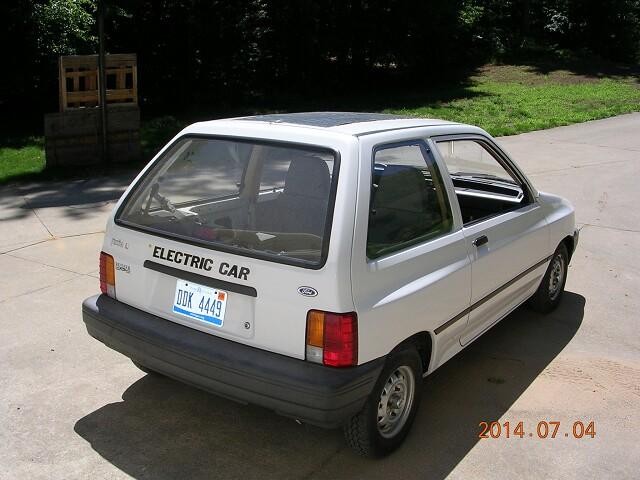
Here is the link to a YouTube Video about the Festiva Conversion as of May 30, 2018.
Here is the link to the EV ALBUM Webpage for the Festiva.
Here is the link to the Eco Modder Webpage for the Festiva.
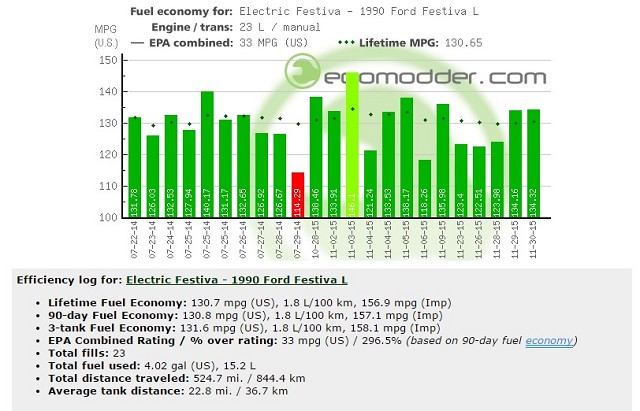
When purchased, the lead acid batteries were worn out from years in storage and the car was impractical as it had a range of 20 miles or less. Fortunately, the batteries had enough range to do some Wh/Mile testing and determine what size battery pack would be needed.
In the Summer of 2015, a used Chevy Volt Pack (16kWh) was purchased by Schultz Engineering and tested in various motorcycle applications.
In October 2015, most of the Chevy Volt pack was moved to the Festiva. The car immediately became practical as it now had a range of 40 miles per charge.
Here is the link to the Webpage on how the Chevy Volt batteries were prepared for the Festiva.
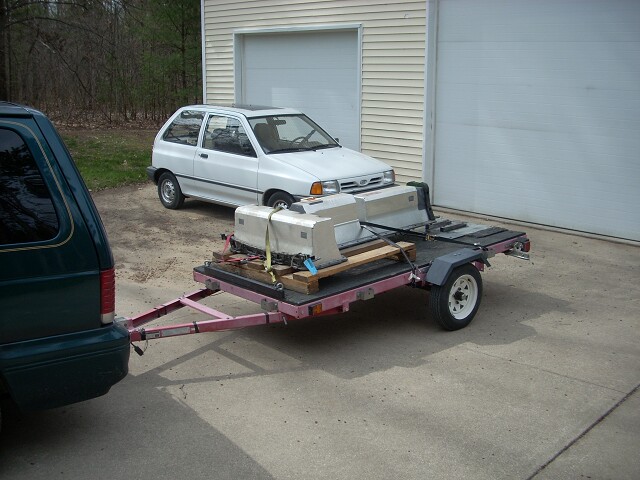
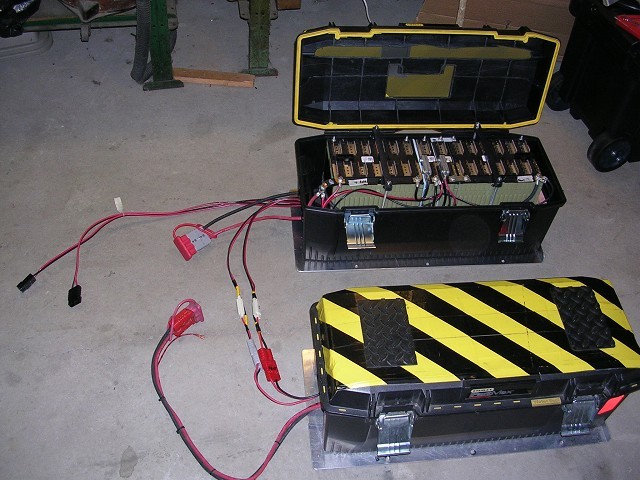
The battery packs are modular and can easily be removed from the car and put in a stationary storage application, or in a different vehicle. Each storage box weighs about 100 lbs. and stores 4.5 kWh of energy.
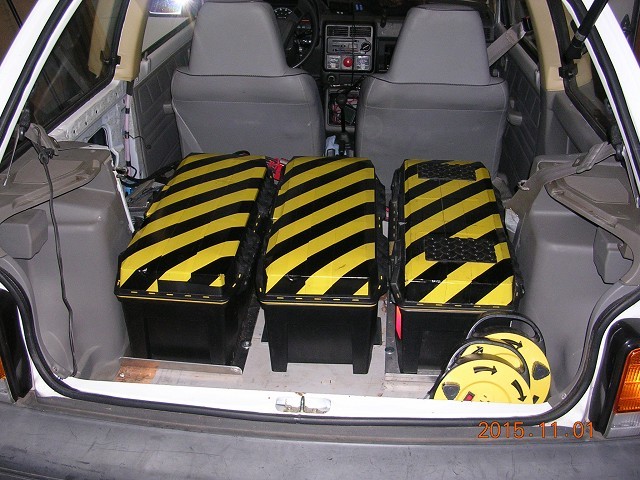
As of November 2015, the entire Chevy Volt pack is powering two vehicles (14 kWh in the Festiva, 2 kWh in the Honda CB-125).
The Honda is licensed as a moped and has been adopted as Nick Schultz's preferred means of transportation for running to School and hanging out with friends. It's free to operate (no gas or oil) and it's quicker/faster than all his friends Mopeds (it has a range of 20 miles per charge). The Festiva consumes 250 Wh/Mile, The Honda Moped consumes 66 Wh/Mile.

As of November 2015, the little Ford is on the road as a tool for Schultz Engineering to study Battery Second Use (B2U) control systems.
The 1,000 Watt Solar array pictured behind the car produces about 1,000 kWH per year. So, this little car (that uses 250 Wh/Mile) can drive 4,000 miles per year on electricity from this array. The balance of energy to charge this car comes from other renewable energy sources (Wind, Solar, Landfill Gas) in Michigan.
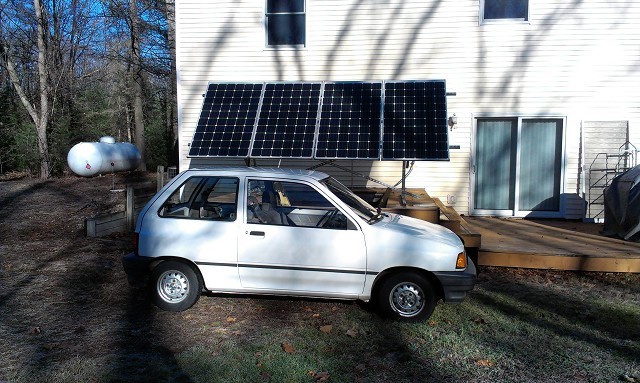
One of the Schultz Engineering, LLC goals for the year is to experiment with Vehicle to Grid (V2G). We're hoping to secure two, used 48 Volt charger/inverters to allow the Festiva to power a home "off the grid".
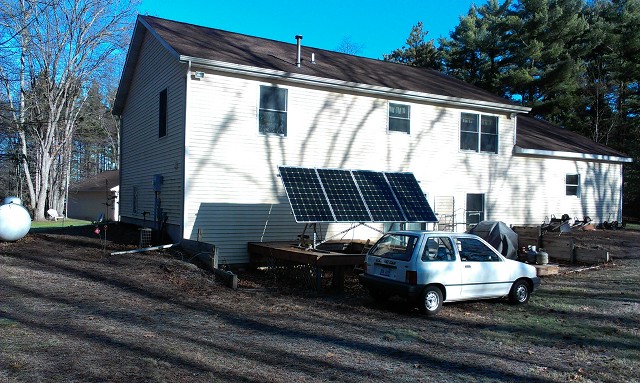
What would happen if Tesla Model S drive train (or something similar) were installed in a Ford Festiva? Jack Rickard at EVTV has been working on making this an option. Picture source: Jack Rickard Channel on YouTube.
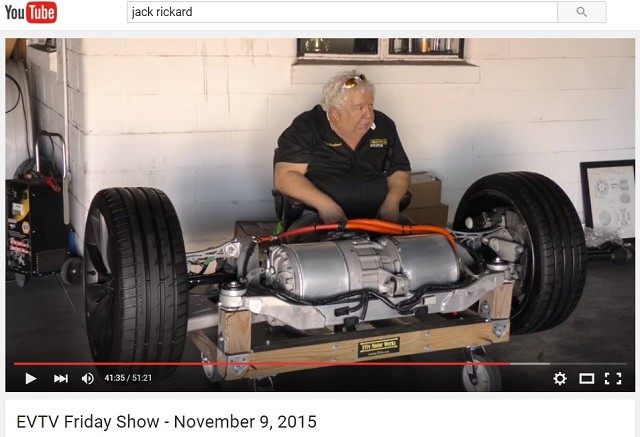
It may not be as quick as this little car, but it would beat most cars off the line: Royal Enfield 1974 Enfield 8000 ECC Flux Capacitor
A friend bought an entire Chevy Volt pack for his motorcycle conversion project but was willing to sell 1/2 of it to me (8 kW). His pack was from a 2013 Volt and had around 100,000 miles on it. So, they were the same cells as already in the car, but with many more miles on them. To fully utilize the cells, the cells from the Honda 125 conversion were pulled back into the car (still in their 50 Calibur ammo boxes).
Here is a shot of the 8kWh battery plus the ammo boxes holding 2kWh more as they were mounted in the car.
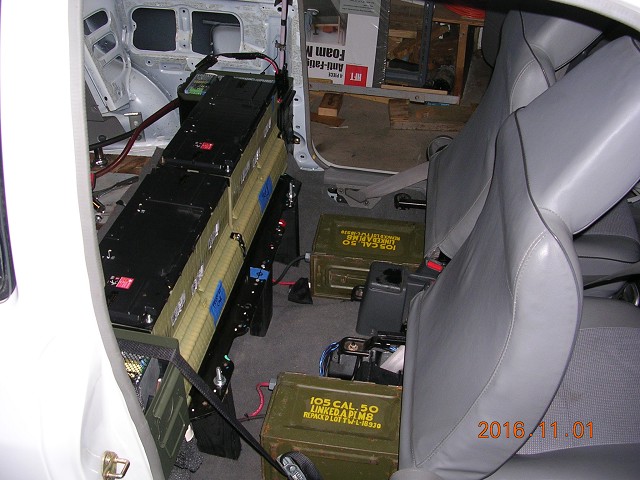
Here is a shot showing the 14 kWh batteries mounted in the rear of the car.
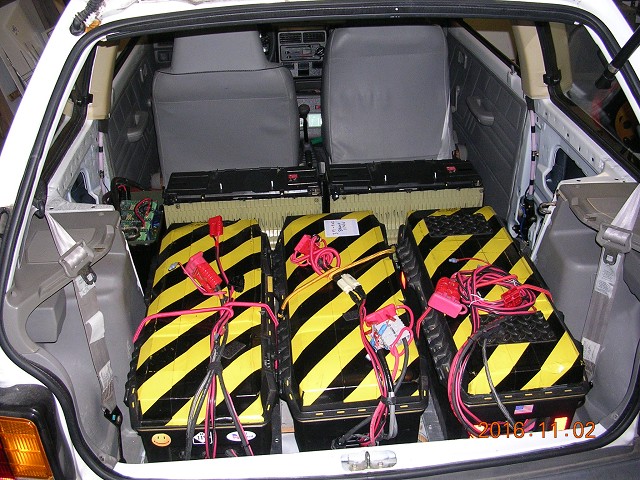
Here is a wiring diagram for the new 10kWh pack as installed. Since the cells are quite different in thier cycle-life age they were kept separate from the cells originally in the car. There are two packs, a front pack that has 10kWh capacity running from 100-112VDC. And a rear pack, that has 14kWh cpacit running from 100-112VDC.
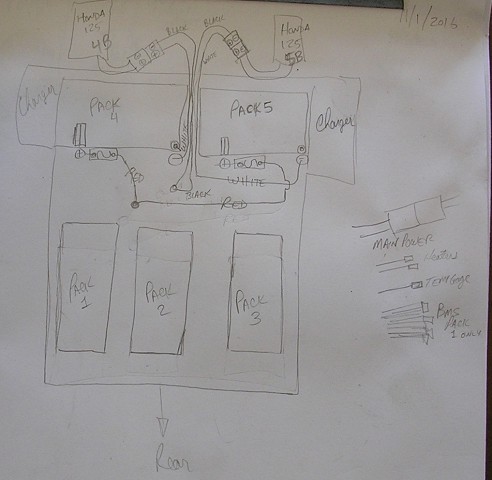
The front pack is retained just as the cells are in the Chevy Volt, a portion of the Chevy Volt mounted plate was cut out to use for this.
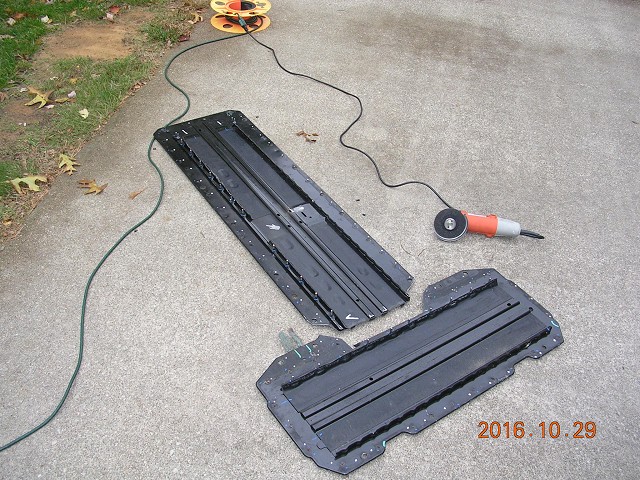
Here is a picture showing a custom clamp that allows for connection that electrically "cuts-off" a couple cells at the end of the stock battery. The extra cells just aren't used and while adding extra weight, no risk was taken by trying to physically cut them off.

A really nice 400Amp selector/disconnect switch was purchased from West Marine to switch between the packs and/or disconnect them.
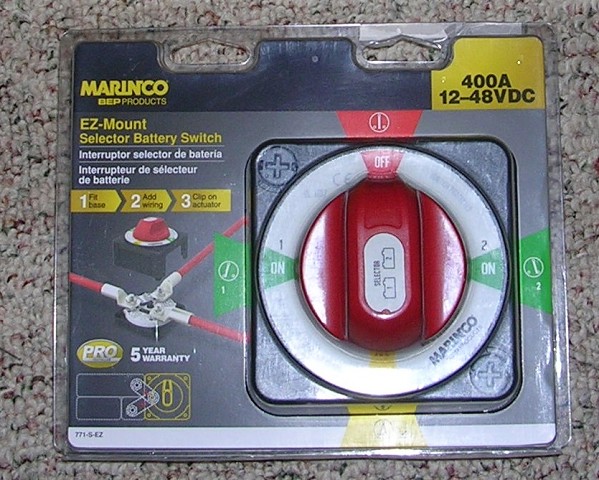
Finally, after a year of penny pinching, My House Plugged Into My Car.
I've been collecting pieces at affordable prices for the last year so that I could power my house with my electric car. Today, I achieved the goal of being able to say, "Honey, could you run out and grab another 6 kiloWatts of electricity?" Using a discarded computer server UPS, in times of emergency, I am able to power my house from the battery in my electric car.
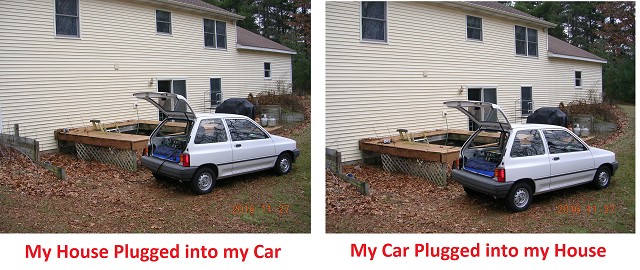
Normally, I connect my car to my house to charge the car. But, in times of emergency (when the grid is down), I can plug the house into the car and power the house. Just one more advantage of an electric car.
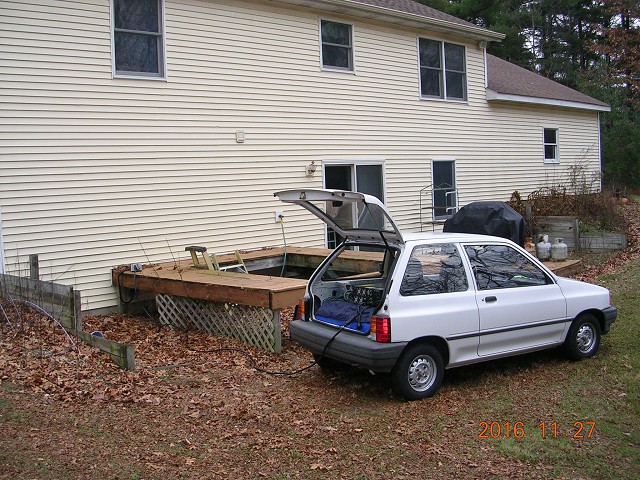
The National Electric Code is yet another example of a good role government can play in our lives. It provides technical standards that can be legally enforced so that people won't do ingeniously dangerous things like this.
By hooking up the generator interconnection box to an RV50 plug, I can easily connect to my home grid from several different locations and/or easily electrocute myself or others or do some welding. DON'T do this at your home it's a really dumb thing to do unless you really know what you are doing and have reason to take the risk!
Per the NEC code, this junction box must be connected through a transfer switch that doesn't allow this receptacle to be connected electrically without the main breaker being disconnected from the normal source of power (i.e. the Grid).
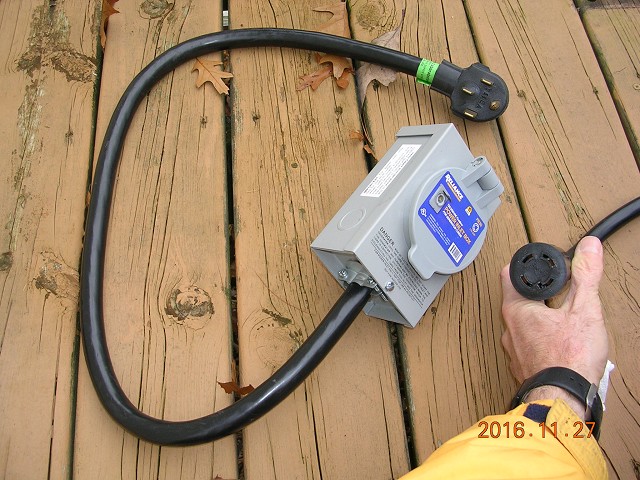
The 220VAC allows me to run my Grid Tie Solar without the grid, and also run my 220VAC well pump, this was of primary importance to me as no water made my house into a very expensive tent when the grid was down.
Now, in theory, I can recharge with solar and perpetually be off the grid in an emergency.
I'm planning to add more solar before the end of the year to take advantage of the 30% tax credit. Who knows what will happen after Trump is sworn in?
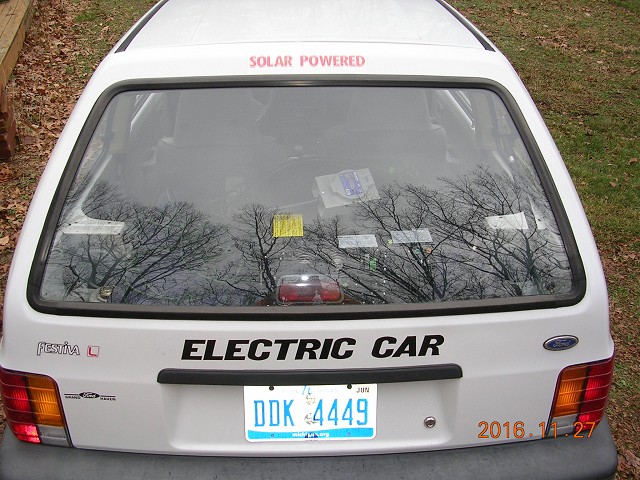

The computer server inverter is quite powerful and supplies both 110 and 220VAC electricity.
It's designed to use 12, 12 volt lead acid batteries. That takes the operating range way up into the 170VDC range on the high side. But, what was of interest to me was at what voltage would it shut down on the low side? And the answer by experimentation was at 121 Volts DC. Which turned out to match a combination of the battery chunks in my car. So, I made a custom harness to plug in that connects a 7kWh portion of my battery pack to the inverter and will power the inverter from full charge of 136VDC down to 121VDC when the inverter will shut off without damaging the battery, because the battery is still within it's voltage range.
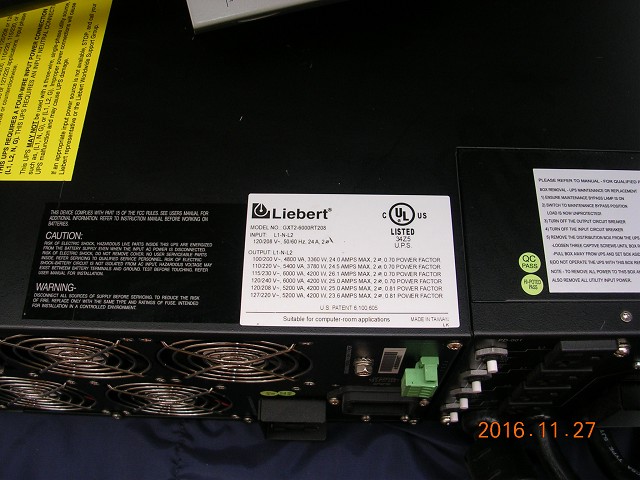
The UPS will start up without a grid connection. In fact, I don't ever have it connected to the grid because it would try to charge my battery pack to the wrong voltage. I'm just using the inverter portion of it because it gives me the power and voltage I need to run my house.
Here is the wiring diagram for how the car battery is "jumpered" to give the proper voltage to run the discarded inverter.
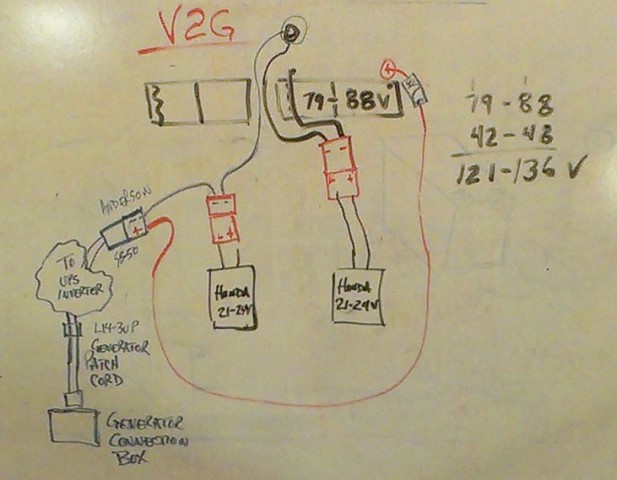
To handle the perpetual added weight of 500 lbs of batteries in back end, the rear springs were swapped out with springs from a 2002 Ford Focus Sedan. Now, the Festiva sits pretty and takes the road without bottoming out the rear springs when going over a bump.
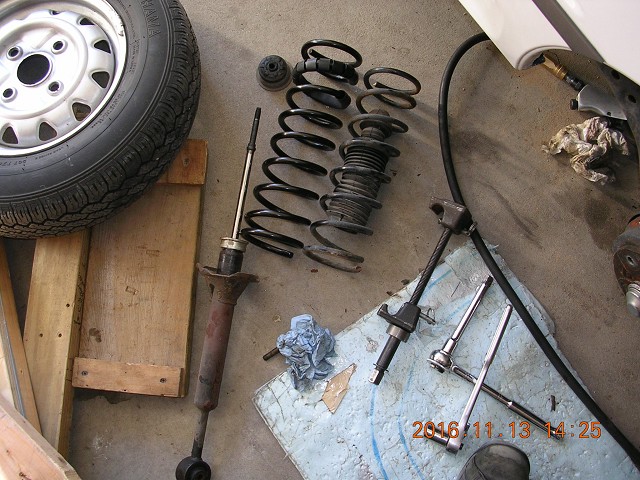
Also, been enjoying storing gear in the Frunk.
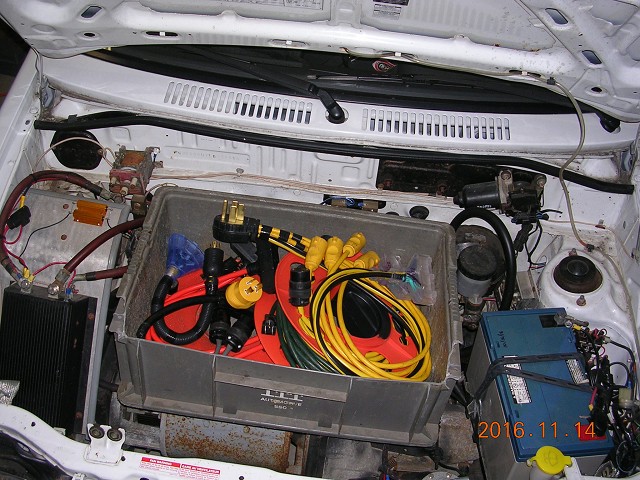
Tripled the amount of solar PV we have so that now we can produce about 3,200 kWh per year. This can power the Festiva for over 10,000 miles per year or my electric motorcycles for over 30,000 miles per year!
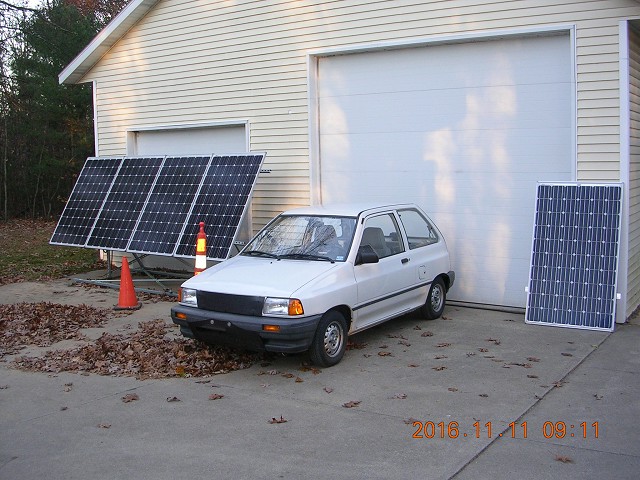
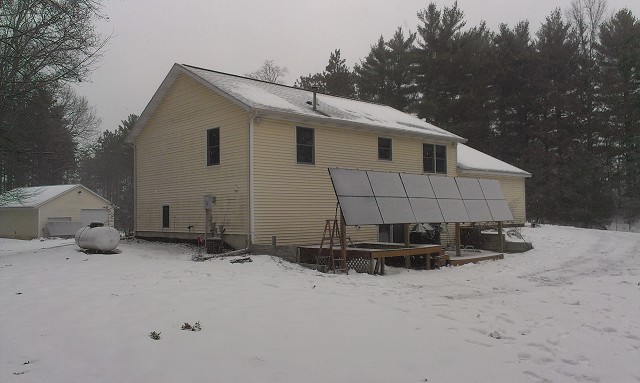
On May 1, 2018, we added a second electric car to our family. We purchased a 2015 Nissan Leaf with CHADEMO DC quick charge port.

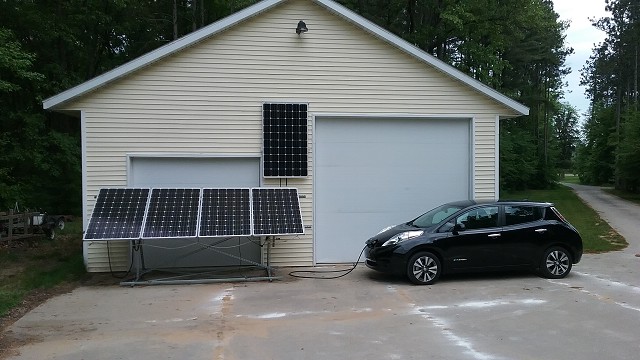
Here is the link to the Eco Modder Webpage for the Leaf.
Schultz Engineering Products are Proudly Designed and Manufactured
in the USA

|
Copyright 2015-2018 Schultz Engineering, LLC
Click here for printable version of this page